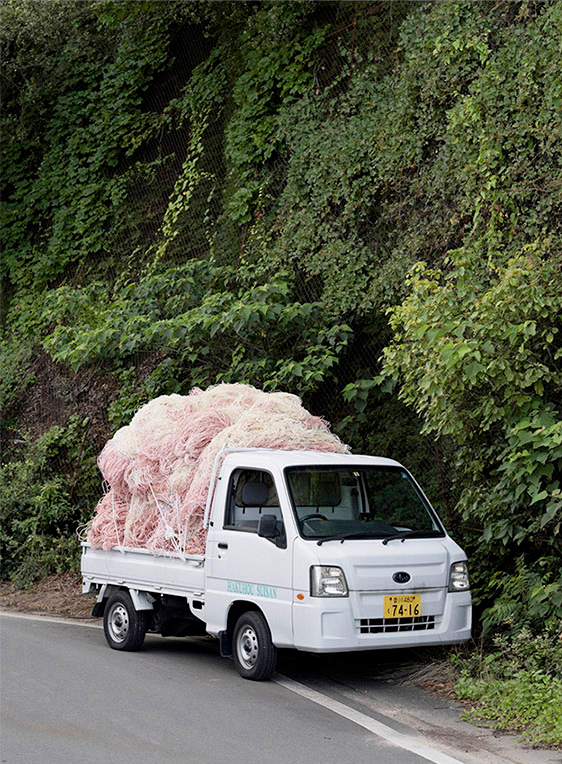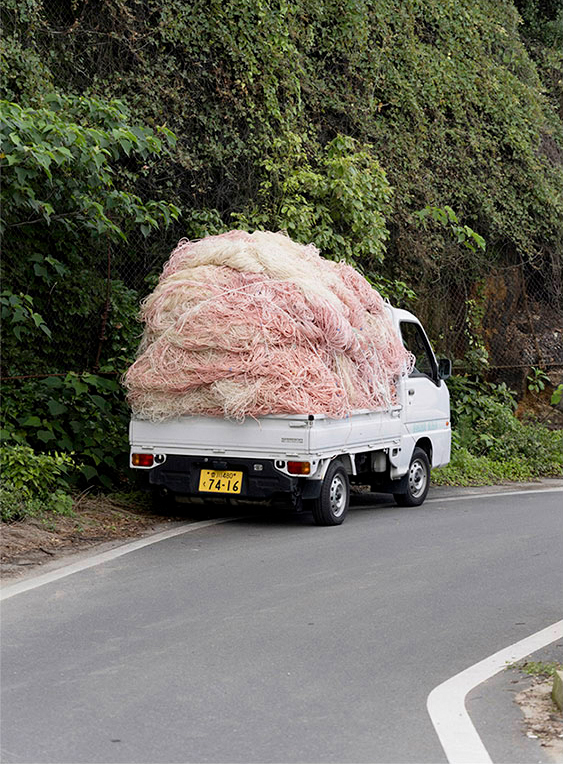Max Zerrahn is a photographer based in Berlin. His first book Snake Legs 蛇足, published by White Belt Publishing, focuses in everyday scenes and details of a bustling metropolis, that would typically go unnoticed in the rush of a city of 38 million inhabitants. The consistent framing, which avoids the abstract snapshots, the smart double-view diptychs of the same site and the intriguing sequencing are three major assets of this publication.
What was the starting point of Snake Legs?
Visiting Japan had been a dream of mine for many years – it’s always been on the top of my list. I had talked to various friends about taking the trip, but for whatever reasons it simply never happened, until last year, when I finally decided to just go by myself. Prior to that, I had never travelled on my own before – it had simply never occurred to me – but I ended up loving it, just wandering about aimlessly, exploring Tokyo and Kyōto (among other places), taking pictures.
Originally, it was never my intention to turn the trip into a proper project but after I came back and started editing the images it felt like there was something there worth pursuing. So a few months later, after some back and forth, I decided to go to Japan again. At that point I had a pretty good idea of what I was trying to achieve, what atmosphere I was after. On my first trip I had taken pictures of just about everything, now I knew which path to follow and it led me to being much more focused.
There is a quote from Chris Marker’s film „Sans Soleil“ from 1983, that I have had stuck in my head for the last few years. In the movie, a female narrator reads from letters supposedly sent to her by the (fictitious) cameraman Sandor Krasna, he writes: “I’ve been round the world several times and now only banality still interests me.” I found that to be very true in regards to the way I view a place when exploring it photographically. It’s the little things, the traces, things left behind, funny intimate details that catch my attention and facilitate a new entrance point to experiencing a foreign place, away from the obvious exoticism. I wanted to maintain a sense of ambiguity, a placeless-ness that I felt was important to keep things interesting and open for interpretation, so stirring away from main streets and major sites, walking more residential areas and back-alleys helped me shift focus in that way.
The flâneur was, first of all, a literary type from 19th-century France, essential to any picture of the streets of Paris. It was Walter Benjamin, drawing on the poetry of Charles Baudelaire, who made this figure the object of scholarly interest in the 20th century, as an emblematic archetype of urban, modern experience. Would you consider yourself as a modern flaneur?
I wish! But seriously, I love the idea of strolling aimlessly, wandering with no other purpose than to observe – what a luxury! On these trips to Japan, I often woke up in the middle of the night, due to severe jet lag, so I got up at the weirdest hours, leaving my hotel at like four in the morning, just to walk through the empty streets of whatever town I was in. Very detached from everybody else’s schedule and reality. By noon I had often already done 10 km – ridiculous.
Unfortunately though, I’m not even a part-time flaneur, in fact I split most of my time between work and family, so „just wandering“ isn’t exactly part of my daily diet. However, I’m trying to make more time for these kinds of explorations, trying to work them into my week (and year) if possible at all.


May we suggest that Snake Legs has not topographical character, neither a comment just for Tokyo but an ascertainment for the ecumenical bustling metropolis?
I agree, the way I see it, Snake Legs is neither about Tokyo, nor about Japan necessarily. Of course that’s only partially true because the images were obviously taken in Japan, however, I tried to make a point of avoiding the pitfalls of exoticism and folkloristic stereotypes, instead trying to concentrate on quiet, everyday observations one could have come across in ANY bigger city around the globe. I that way Snake Legs is much more about a sense of attentiveness and observing, than it is about topographically describing Japan.
In the photobook, we see an interesting combination of vibrant color and black & white photographs. Why did you choose this route?
I have always enjoyed mixing both black & white and color. For some reason that still seems to be a big No No for a lot of people, but the same way different sizes and formats can help to create a sense of rhythm within the long-form narrative, the mix of color and b&w can do just the same.
Could you share some thoughts on the decisions you made with the White Belt Publishing for the book designing, binding, paper?
The minute I decided to turn that pile of photographs I had brought back from Japan into a book, intuitively I knew it was going to be a rather small and modest format. I feel like the vast majority of images I take work perfectly well in smaller size, so there was no need to artificially super-size them. 142×190 mm is obviously not your typical coffee table book and the uncoated Munken paper we ended up using further underlines that sense of moderation. It has a very tactile quality and I have always loved the way photographs print on that kind of material. Plus I like the idea of being able to sell the book at an affordable price, to me that underlines the idea of books ideally being rather democratic objects, not a luxurious commodity.
Except from your personal work you have a wide list of collaboration with magazines. So my question maybe is a timeless one in the art community: Ηow do you manage to keep your own aesthetics and style in those areas?
When it comes to putting together a portfolio, I think it is incredibly important to only show the kind of work you will want to be doing. At least stylistically. That being said, people might still book you to do all kinds different projects but they initially came to you because of a certain sensibility that attracted them, so in that sense chances are much higher they will just let you do what you do.
I think some photographers try to present themselves in a way of saying: „I can do whatever you want me to, whether it’s studio work or reportage or fashion, or whatever.“ That may work for some, but in the end it turns you into nothing more than a handyman with a camera, I don’t think that’s where I would want to be heading.
What are you working on now?
I actually just spent the last couple of days kicking off a new project, something a bit more conceptual this time, but let’s see, it’s still early stages so it’s difficult for me to talk about and it might still end up in places I’m not foreseeing at the moment. At least that’s what I’m secretly hoping for haha…
More on his website



















